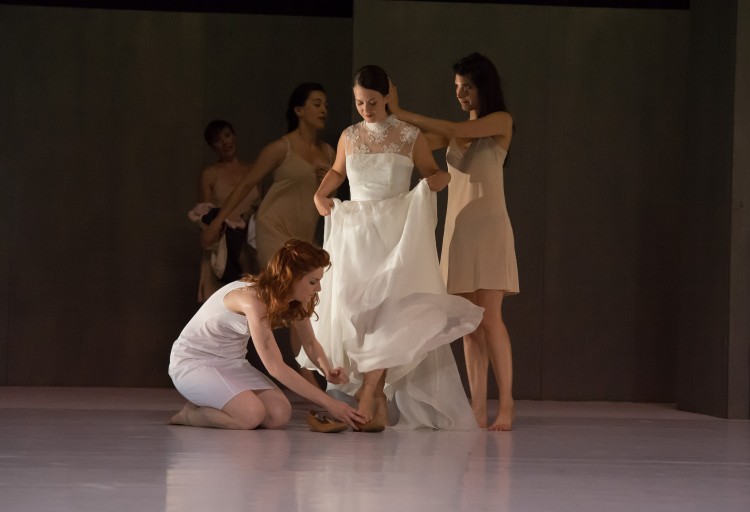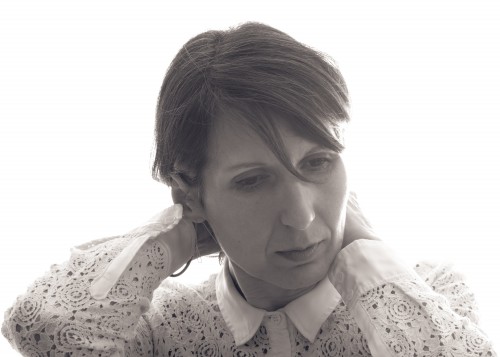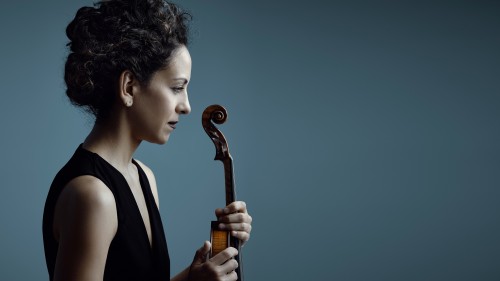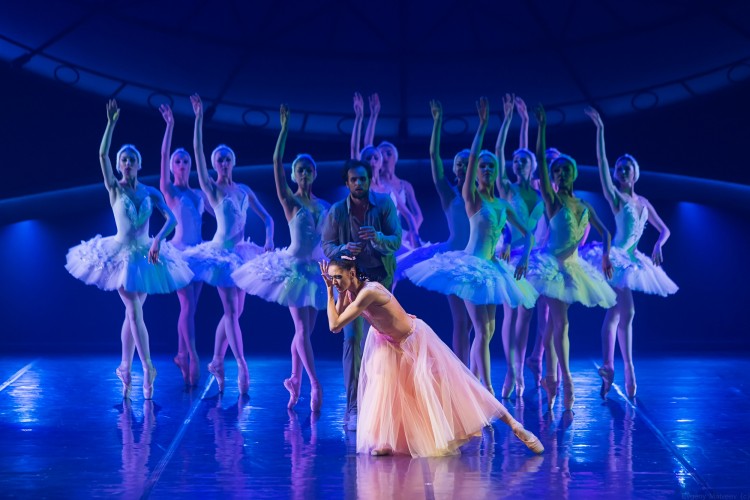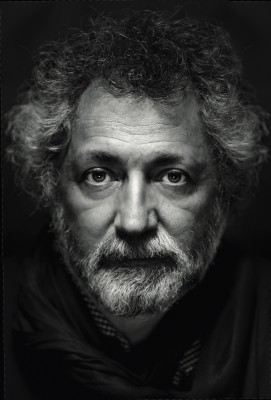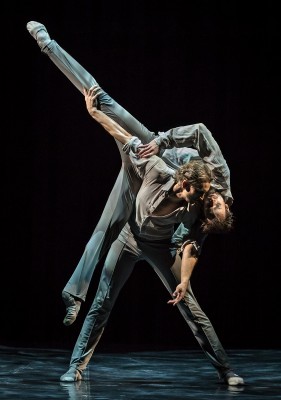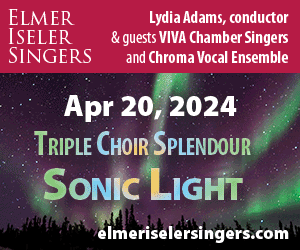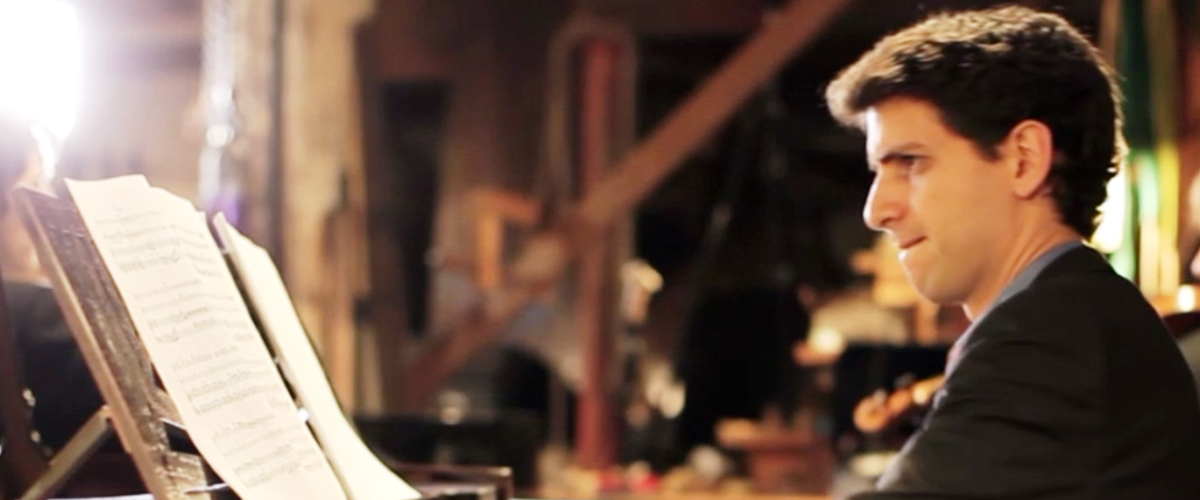
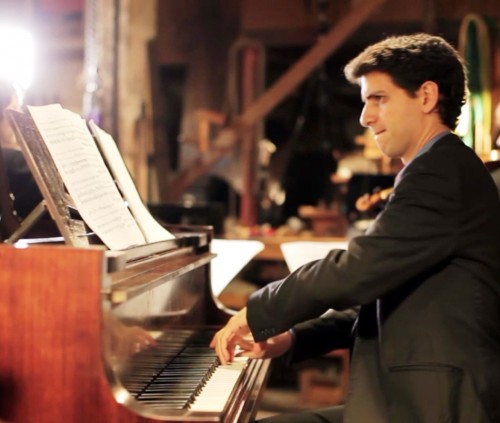 Syrinx Concerts Toronto hasn’t always been called that (it was Chrylark for its first two seasons, in 2002 and 2003) but it still does what it has done with remarkable consistency for the better part of a decade and a half – namely present four to five annual chamber concerts with an identifiably unique character, performed by a roster of top-flight musicians who ply their musical trade, regularly or occasionally, in Toronto. One of the two concerts Syrinx will present over the course of the coming four or five weeks, May 26 at Heliconian Hall, is definitely typical of what Syrinx does; the second, June 6, is definitely not.
Syrinx Concerts Toronto hasn’t always been called that (it was Chrylark for its first two seasons, in 2002 and 2003) but it still does what it has done with remarkable consistency for the better part of a decade and a half – namely present four to five annual chamber concerts with an identifiably unique character, performed by a roster of top-flight musicians who ply their musical trade, regularly or occasionally, in Toronto. One of the two concerts Syrinx will present over the course of the coming four or five weeks, May 26 at Heliconian Hall, is definitely typical of what Syrinx does; the second, June 6, is definitely not.
Observably, a longstanding concert series with an identifiably unique character doesn’t get to be that way without some stubborn and creative individual of strong character holding it all together. And in Syrinx’s case, Dorothy Sandler-Glick is that someone.
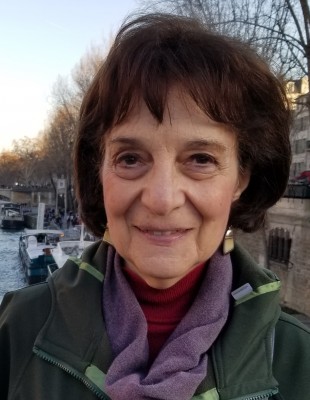 Sandler-Glick, Syrinx’s founding artistic director, is both excited and a little bit anxious contemplating the month ahead, and it’s not the May 26 concert that is the source of her anxiety. After all, Heliconian Hall on Hazelton Ave. has been Syrinx’s home for every concert of their history; and the accomplished Moncton-born Quatuor Arthur-LeBlanc, Laval University quartet-in-residence since 2005, are Syrinx regulars who know and appreciate the deeply attentive listening that characterizes a Syrinx recital.
Sandler-Glick, Syrinx’s founding artistic director, is both excited and a little bit anxious contemplating the month ahead, and it’s not the May 26 concert that is the source of her anxiety. After all, Heliconian Hall on Hazelton Ave. has been Syrinx’s home for every concert of their history; and the accomplished Moncton-born Quatuor Arthur-LeBlanc, Laval University quartet-in-residence since 2005, are Syrinx regulars who know and appreciate the deeply attentive listening that characterizes a Syrinx recital.
They also know the time-honoured Syrinx concert formula: main works drawn from the standard classical chamber repertoire; always a piece by a Canadian composer; and, as often as not, an opportunity, in at least one work on the program, to collaborate with another musician from Sandler-Glick’s always renewing circle of musical associates. For their April 2014 visit it was Dohnányi’s Piano Quintet with one of Sandler Glick’s favourite Toronto-based collaborative pianists, Gregory Oh. This time it is Schumann’s Piano Quintet in E-flat, Op.44 with rising Israeli pianist, Ishay Shaer.
And it is with the introduction of Shaer to this story that an explanation of Sandler-Glick’s state of mind starts to become clear, because hard on the heels of Shaer’s May 26 guest appearance with the LeBlancs, his June 6 solo piano recital will take Syrinx, for the first time in their history, out of the cosy confines of their Heliconian Hall home into unfamiliar surroundings – Mazzoleni Concert Hall at the Royal Conservatory of Music.
It’s a short journey – just a few blocks – but it’s a major departure. It’s also, Sandler-Glick says, a risk worth taking. “We’ve promoted or presented Ishay a few times already,” she says, “and I’ve just seen his evolution. You could say I’ve become somewhat of a groupie. I’ve gone to Holland to hear him, this last time was a Brahms festival in the Hague. And I also went to Paris to hear him do a solo concert. Over the years I’ve kept track of him and been in touch, and have read reviews that have been just superb. Last year I heard him at Bristol and it was just top of the mark. So I thought ‘I have to do something more for him.’ And this is the best thing I can do. I can’t get him into Koerner Hall. I don’t have the wherewithal for that, either the money or, as important, the audience.”
Even Mazzoleni, at double the capacity of Heliconian, is no cinch, in terms of drawing an audience. Does double the capacity mean double the cost? I ask. “I wish!” she says, ruefully, and itemizes all the areas where the increases are exponential. So she will invite people, vigorously, beyond her faithful subscriber base and, with luck and good management, draw on the relationships she has started building with two other salon series, both home-based, one, with a following of 80 to 100, the other with 40 or 45. “I used to worry about the question of having our own audience cannibalized,” she says. “But not any more. The reward is in both directions. We are all happy about it.”
Ishay’s June 6 concert program is a hefty one: Beethoven’s Piano Sonata No.32 (his last); selected Debussy Etudes (which the composer warned pianists not to attempt “unless they have remarkable hands”); and Chopin’s Piano Sonata No.3 in B Minor, Op.58, considered to be one of Chopin’s most difficult compositions, both technically and musically. And, yes, telltale Syrinx fingerprint, there will be a Canadian work on this program too – Image Astrale by pioneering composer Jean Coulthard, one of three Western Canadian women (the others were Violet Archer and Barbara Pentland) who left their formative mark on the 20th century Canadian musical landscape. “It was on his 2017 program for us too,” Sandler Glick says. “There is something about her music that I think he really gets.”
“So is the Canadian work on the program ever the starting point for building a program.” I ask. A quick shake of the head. “This is the part of it that makes me a dictator, and I love it. I have a lot of say. I get to suggest repertoire, and I suggest what I want to hear; and a lot of what I want to hear is the familiar, the music I love. It’s a lot of what the audience wants to hear too. So if there’s enough of what’s familiar on either side, at least they are not going to complain. And at best they are going to be receptive.”
Out of context, one could take the comment as dismissive of Syrinx’s bedrock commitment to Canadian work. But to do so would be to miss a fundamental point. Chrylark/Syrinx was founded in 2003, one year after the death of Sandler Glick’s former husband, composer Srul Irving Glick, with the express mission of creating an artistic context in which his music would be kept alive. Over time the mandate spread to include other composers, notably in the early years, Oskar Morawetz and Walter Buczynski who were part of Srul Irving Glick’s own circle.
“At first we tried programming one composer for a whole season,” she says. “But life is not long enough for that! So it became one composer per concert, and we have heard some wonderful pieces over the years.” Srul Irving Glick’s own work has not been neglected over the passing years. But neither has it been thrust forward, although with the coming season being the 85th anniversary of his birth, there might be a case for doing so again in the near future. “It’s a balance you have to find,” she says.
April 23, 2017, 15 years after Srul Irving Glick’s death almost to the day, was one such beautifully balanced moment: both in terms of his legacy and, as important in terms of defining the complex skill set that Sandler-Glick brings to keeping Syrinx a significant part of Toronto’s musical life. The concert that night was a live CD recording of all six of Glick’s Suites Hébraïques, the first time that all six suites had been performed together. The roster of musicians assembled for the event reflects Sandler-Glick’s priorities: Susan Hoeppner, flute; James Campbell, clarinet; Wallace Halladay, saxophone; Elissa Lee, violin; Barry Shiffman, violin; Sharon Wei, viola; Cameron Crozman, cello; and Angela Park, piano – established, mid-career and emerging artists, a testament to her commitment, above all else to putting the interests of the musicians ahead of everything else.
Easy to lose sight of in talking about her curatorial role, is Sandler-Glick’s own lifelong passion for the piano, starting at age four, studying under Alberto Guerrero at the RCM, continuing in Paris where she gave recitals and taught while studying herself, then upon her return performing professionally with orchestras and in solo and chamber music recitals, live and for CBC radio, premiering many new works by Canadian composers along the way. And, from the latter half of the 1990s, maintaining a vigorous teaching career, both at the RCM and privately. “I had to get a real job after Srul and I separated,” she says. “Now I only teach my grandchildren, which is a bit of a mixed thing. I can’t make them practise. But they are all musical and all interesting people to know.”
You won’t ever find her name among the pianists in her own series though: “I was never a very happy performer” she says. “Not as a soloist nor even as a chamber player.” One could surmise that part of what she brings to her relationship with musicians, and to forwarding the musical aspirations of “top of the mark” performers like Ishay Shaer, stems from her own understanding of just what it takes to get, and stay there.
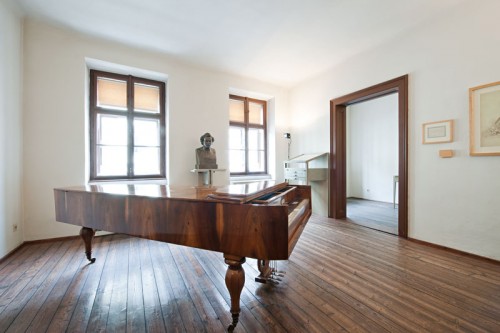 As for her own musical and pianistic journey, it has taken a recent and happy turn. “It was after I turned 80, I told myself I wanted to do a concert again,” she says. And did, late last year. At the Schubert House in Vienna, no less, after a trial run at home salon in Toronto. I wasn’t there, but if the concert went as planned it included a Mozart sonata, three Schubert Impromptus a Brahms Capriccio and Ballade and Schubert’s Sonata in A Minor for Arpeggione and Piano.
As for her own musical and pianistic journey, it has taken a recent and happy turn. “It was after I turned 80, I told myself I wanted to do a concert again,” she says. And did, late last year. At the Schubert House in Vienna, no less, after a trial run at home salon in Toronto. I wasn’t there, but if the concert went as planned it included a Mozart sonata, three Schubert Impromptus a Brahms Capriccio and Ballade and Schubert’s Sonata in A Minor for Arpeggione and Piano.
And, of course, a Canadian work: Sonata for flute and piano by, who else, Srul Irving Glick.
David Perlman can be reached at publisher@thewholenote.com
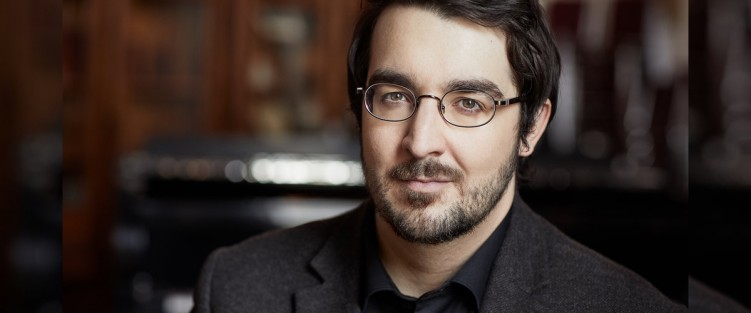 WN: In addition to your concert on July 19 at this year’s Toronto Summer Music Festival, you have the honour of mentoring Fellows of the TSM Academy. Why is mentoring so crucial?
WN: In addition to your concert on July 19 at this year’s Toronto Summer Music Festival, you have the honour of mentoring Fellows of the TSM Academy. Why is mentoring so crucial?



